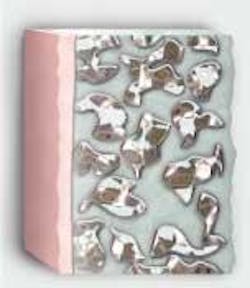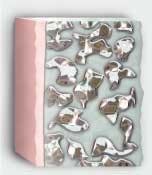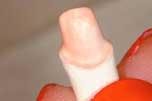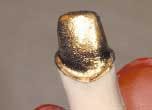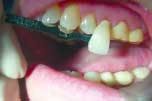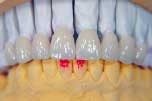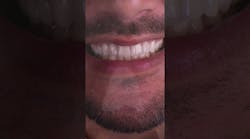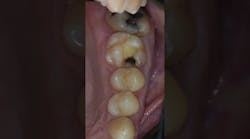The advantages of Captek®
By Bob Cullivan, Director of Quality Control, Trident Dental Laboratories
Porcelain fused to an alloy has been the cornerstone of fixed prosthetic dentistry for more than 50 years. The reason is predictable esthetic results, durability, and biocompatibility.
Most shades can be attained, given there is enough preparation reduction to allow for the proper thickness of porcelain. The cast metal provides a strong rigid framework that will support porcelain and can withstand the forces of mastication over a lifetime. Oxides in the alloy react with the porcelain to form a strong porcelain-to-metal bond. Porcelain fused to gold was the norm when it was economically feasible and there was a high level of biocompatibility. During periods of high gold prices, many alloys were developed using less expensive metals, making prices more feasible but with questionable biocompatibility.
So why use Captek®?
Captek is different as it uses capillary technology to provide an interlocking composite of platinum/palladium and gold framework for its strength (Figure 1). The process is quite different as well. Instead of the lost wax casting technique, Captek materials are built on a refractory die (Figure 2). First, a layer of platinum/palladium-impregnated wax is applied to the die and fired in a furnace (Figure 3). A second layer of mainly gold-impregnated wax is applied over the first layer and fired again (Figure 4). The gold interlocks throughout the platinum/palladium layer forming a strong internally reinforced framework (Figure 5). The wax impregnated materials are applied in layers of even thickness. The result is a high-strength gold colored framework with a very consistent 0.3 mm coping thickness throughout.
This is important for several reasons. The consistent coping thickness allows consistent porcelain layering with very predictable shade results (Figure 6). With the high gold content, Captek is nicely burnishable at the margins allowing optimum results with even a feather edge margin.
Because Captek has that warm gold color, we are not masking out a dark oxide layer. With the fairly recent advances in porcelain technology, achieving proper shade and esthetics have become very predictable even in cases where it is not possible to gain the optimum amount of preparation reduction. Furthermore, even though it is very popular to do a shoulder butt margin with Captek, in most instances it is not necessary.
That is one of the reasons we suggest d.Sign porcelain fused to Captek. With the opaceous dentins and modifiers available in d.Sign porcelain, we are able to produce optimal shading with minimal space even at a feather edge margin. Another reason to use the d.Sign porcelain is that it is low-abrasion and, therefore, is kinder to the opposing dentition.
Biocompatibility has always been a major concern related to dental prosthetics. This is more evident today with patients becoming educated on their dental options and the questionable level of biocompatibility of many of the alloys available on the market today. Captek with its 88 percent gold, 4 percent platinum, and 4 percent palladium is highly biocompatible. Several studies have found that Captek may resist plaque and bacteria greater than natural dentition — as much as 71 percent better. This is especially important when considering the trauma to the gingiva during preparation procedures and the speed in which the tissue will recover.
Bridges are a large part of the Captek repertoire. As long as the 15-16 mm span limitation is not violated, the size of a Captek bridge or splint is unlimited. Captek is often prescribed for full-mouth reconstructions (figure 7).
There are two particular contraindications to using Captek. When a tooth preparation is severely broken down, the porcelain becomes unsupported beyond 3 mm because the Captek framework is thin. The second contraindication is a crown that is going to fit under a partial — we must support the clasps with metal because forces directly on porcelain only will create stresses that will fracture the porcelain. The solution to both is to use a cast framework such as Golden Cast™, with the ability to build-up the framework to allow an even thickness of porcelain coverage and proper support throughout.
Captek is an excellent material for crowns and bridges achieving superior esthetics, strength, and biocompatibility. The esthetics of Captek rival that of all-ceramics with better strength. Because of these and its economical pricing, Captek has become the standard for crown and bridge technology.
For more information, call Trident Dental Laboratories at (800) 221-4831.
